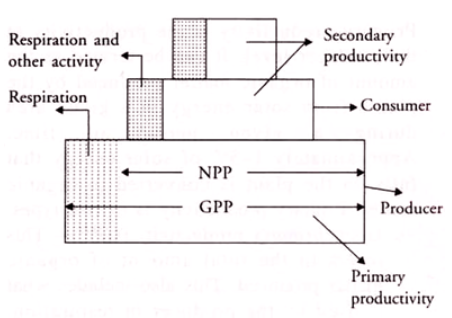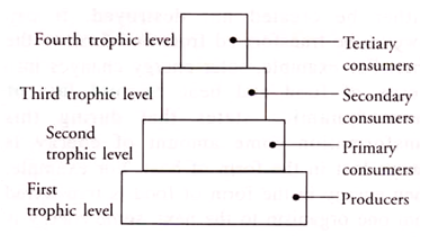Productivity in ecology is the rate of biomass production or the amount of food energy obtained or stored by a trophic level per unit area in a unit. It is also defined as the amount of energy stored in plants through photosynthesis. It is measured in gm/m2/year or kcal/m2/year.
Types of productivity.
There are three types of productivity, according to Odum; primary productivity, secondary productivity, and community productivity.
Primary productivity.
This is productivity at the producer level. Therefore it can be defined as organic matter amount produced by plants from photosynthesis during a given period. It is estimated that 1-5
- Rate of sugar formation.
- Rate of oxygen production.
- Amount of carbon dioxide used.
Primary productivity is further divided into:
Gross Primary Productivity (GPP):
This is the total amount of energy produced, including what is used in respiration by the producer. In other words, GPP is the amount of energy captured by a photosynthetic organism. There is a higher net production in rain forests while lowest in deserts.
Net Primary Production (NPP):
Also known as net assimilation or apparent photosynthesis, this is the gross production minus the loss by respiration and decomposition.
NPP= GPP- Respiration

NPP can also be defined as the energy balance after the cost of respiration is met by the producers. The energy stored in green plants serves as food for decomposers and herbivores.
The most measured product of photosynthesis and respiration is oxygen. Therefore a good process to measure productivity is in aquatic ecosystems where dissolved oxygen is measured. These measurements can be done indirectly. This is because productivity happens simultaneously with respiration making it difficult to conduct a direct measurement.
Secondary productivity.
Productivity at the consumer level is called secondary productivity. It only reflects the utilization of food in production of consumer biomass. It serves as the food to the next trophic level.

Community productivity.
Community productivity refers to the rate of net synthesis of organic matter per unit time and area by a particular community.
Trophic levels.
These are basically the feeding levels in an ecosystem. They are made up based on the steps found in the food chain. Usually, there are 4-5 trophic levels where energy flows in only one direction of the food chain. These levels are as shown in the diagram below.
